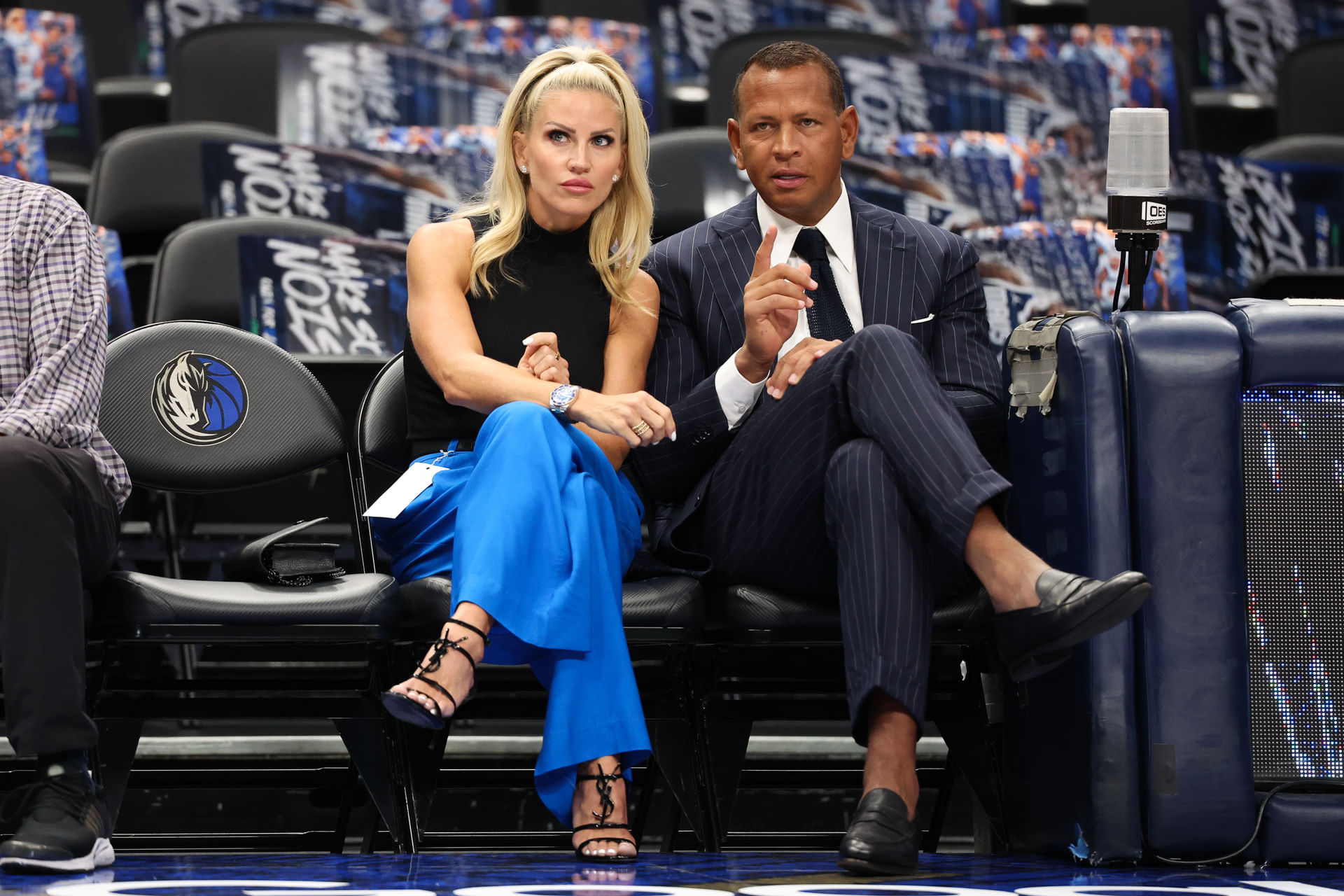Unless you’re a collegiate crew athlete or a CrossFit regular, chances are you ignore the rowing machine as blatantly as Big did Carrie, Benny Blanco does hair gel, or my last Hinge date does women’s rights (yikes). But here’s the deal: the rower (a.k.a. the ergometer) offers serious health perks and can help you hit a wide range of fitness goals—from building muscle to burning fat.
“Rowing is one of the rare exercises that strengthens your muscles and boosts your cardiovascular fitness at the same time,” says competitive rower Sera Moon Busse, an athlete with Hydrow. With proper form, rowing works your cardiovascular system, yes—but also your triceps, arms, quads, glutes, hamstrings, core, back, and shoulders. In other words, it’s the ultimate full-body workout.
And while weight loss isn’t (and shouldn’t be!) everyone’s goal, rowing can support those efforts, too. “Improved anaerobic conditioning plus muscular endurance supports weight management,” says Chris Chang, CPT, a personal trainer and senior director of exercise science at Ergatta. The rower can be used for steady-state cardio (a.k.a. Zone 2, which burns calories) or high-intensity interval training (HIIT), which burns calories and builds strength, he adds.
Best of all? While the machine looks intimidating, indoor rowers are actually beginner-friendly. This guide breaks it down: rowing benefits, form tips, and even a 30-minute rowing workout that proves this machine deserves more love—whether you’re a total beginner or a rowing regular.
Meet the experts: Sera Moon Busse is a competitive rower and Hydrow athlete. Chris Chang, CPT, is a personal trainer and the senior director of exercise science at Ergatta. Grayson Wickham, DPT, CSCS, is a physical therapist, strength and conditioning coach, and the founder of Movement Vault. Sharon Gam, PhD, CSCS, is an exercise physiologist and strength and conditioning coach.
The Biggest Training Myths About The Rower
Most people never learned rowing in gym class, and few high schools offer crew, so the machine tends to feel more mysterious than other gym staples. Let’s clear that up by busting some major myths:
- It’s just an upper-body workout. This is “the biggest misconception,” says Chang. Sure, it’ll fire up your back, biceps, triceps, traps, and forearms—but rowing actually recruits about 86 percent of your muscle groups. “In fact,” he says, “it uses your glutes more than most forms of cardio.” And glute strength is not just about aesthetics. It supports posture, stability, power, explosiveness—and even a boosted metabolism.
- It’s super high-impact. Rowing is rarely mentioned in the same breath as cycling as a low-impact cardio option, but it should be, says Moon Busse. “Rowing allows you to train at high intensities with minimal joint stress,” she says. In fact, rowing may even outperform the exercise bike because it engages more muscles, which translates to greater calorie burn and improved endurance in less time. Bonus: Research shows rowing can also increase bone density (especially in the spine and trunk), something cycling can’t match due to its lower mechanical loads.
- It’s just for trainers or former crew athletes. “People often assume rowing is too technical and only for elite athletes,” says Chang. “But it’s actually one of the most effective, low-impact, time-efficient workouts anyone can do.”
- It’s really hard to do it correctly. There’s proper form to learn (more on that below), but that’s true of every piece of gym equipment. In recent years, companies like Ergatta, Peloton, Hydrow, and Concept2 have made indoor rowing more user-friendly than ever. Ergatta offers game-based workouts, and Peloton streams live coaching—so there’s truly something for everyone.
Exactly How Rowing Builds Muscle And Burns Fat
Stimulating new muscle growth and losing fat at the same time? It’s possible—but it takes a two-pronged approach. (Plus, proper nutrition to support your exercise efforts—without both, your body won’t lose fat or build muscle.)
How? For starters, rowing burns an estimated 481 to 713 calories per hour, Wickham says. “If you’re rowing a lot but crushing five jars of peanut butter a day, fat loss won’t happen—but rowing can definitely help create the calorie deficit you need.” In fact, research in the Annals of Rehabilitation Medicine shows rowing helps reduce fat mass and body fat percentage. In the study, adults with no history of regular exercise rowed five days a week for six weeks, with each session including a 10-minute warm-up, 20 minutes of rowing, and a 10-minute cooldown.
Rowing also works nearly every major muscle group, which means it can trigger new muscle growth for beginners who aren’t used to resistance training. This added muscle boosts resting metabolic rate—how many calories you burn at rest—because muscle requires more energy to maintain than fat, Wickham says.
For more advanced exercisers, rowing will boost muscular endurance, but might not be enough to stimulate new muscle growth on its own. “If you’ve been lifting for a while, you’ll need to combine rowing with heavy strength training and proper fueling for hypertrophy,” Wickham says.
Benefits, At A Glance
- Burns anywhere from 480 to 700 calories in 60 minutes
- Engages muscles in legs, core, back, and arms
- Combines cardio and resistance training
- Ideal for beginners
- Pairs well with lifting
How To Use The Rower Safely
Just like poor form ruins a biceps curl or a deadlift, improper rowing form can sabotage your progress. According to Moon Busse, each rowing stroke has four key phases:
- Catch: Sit tall with feet strapped in, shins vertical, torso leaning forward slightly, and arms extended in front of you holding the handle.
- Drive: Push through your feet to extend your legs while keeping your chest tall—“like you’re trying to push the rower away,” Moon Busse says.
- Finish: As your legs near full extension, lean back slightly and pull the handle to your chest (about where your sports bra band sits).
- Recovery: Reverse the motion—extend arms, hinge forward at the hips, then bend the knees and glide forward.
Now, repeat with the rhythm: Legs → Body → Arms. Then Arms → Body → Legs. It might feel clunky at first, but it’ll click.
“Many beginners rely too much on their arms, yanking the handle instead of pushing with their legs,” says Chang. But your legs should do 60 percent of the work. “Think of rowing as a lower body push, not an upper body pull,” he says.
Or, visualize a deadlift—the movement pattern is surprisingly similar. This will naturally help you keep your shoulders down and away from your ears.
Best Rowing Machines For Home Gyms
How To Make Rowing Less Boring—And More Effective
New equipment = temporary excitement. But these tips can will you stay hooked long-term.
- Try a class. If you’re a visual learner you might benefit from an in-person or live-streamed lesson. “It will decrease that barrier to entry and will give you confidence in your workouts,” says Moon Busse. Many in-person CrossFit boxes and Orangetheory, F45 Training, and Row House studios offer row seminars, workshops, and entry-level classes (usually called on-ramp classes at CrossFit gyms). Additionally, many indoor rowing machines with streaming capabilities have a workout series dedicated to and designed for people who have never taken a rowing stroke before, says Moon Busse. Noted!
- Gamify it. Amongst cyclists, Zwift is beloved for its ability to transform a ride into a video game. Thankfully, there are indoor row machines that do the same. Ergatta and Aviron, for example, both offer game-based workouts that Chang says keep you engaged and more likely to make it a habit, which is especially ideal for those on a weight loss journey.
- Play with the damper. Air-based rowers, such as the Concept2, have a damper that controls the degree of (wind) resistance, says Wickham—usually on a scale of one to 10. Rowing at a five is best for most people because it offers resistance while still allowing you to move powerfully, he says. However, it can be fun to experiment with different resistances as you acclimate to the machine.
- Set a goal. It might sound obvious, but Wickham says the best way to stay motivated on a health or fitness objective is to set a related, specific goal. “You’ll be a lot more likely to hold yourself to a goal than you are to hold yourself to a non-specific amorphous desire,” he says. Fair! “Your goal could be rowing specific, purely fitness based or aesthetics related, but it could also be about having the requisite strength to play with your kids or grandkids or capacity to walk into town,” he says.
- Use it to warm up. A workout routine that features strength training and HIIT training is key for losing fat while maintaining (or gaining) strength, says Wickham. “Ideally, your strength routine will include compound lifts and follow the progressive overload principle, meaning you’ll continuously lift heavier as you get stronger,” he says. “But whether you’re lifting lower body, upper body, or full, on lifting days, you can utilize the rower as part of a comprehensive warm-up,” he says. Two to five minutes row to start will increase blood flow to all the muscles you’ll be utilizing as you lift, he says.
Beginner-Friendly Rowing Workout To Try Today
You don’t need to row for hours to see results. “Just 20 to 30 minutes a few times a week will do,” Moon Busse says. Here’s her simple, effective interval workout:
Time: 32 minutes | Equipment: Rowing machine | Good for: Full body strength and conditioning
Instructions: During the warm-up, slowly ramp up your pace every 30 seconds. By the final few minutes, your breathing should be heavy enough that talking is tough—but not impossible. Aim for an RPE (rate of perceived exertion) of seven to eight out of 10.
During the intervals, try to hit the same distance or calorie count each round. “Don’t go all-out on the first set,” warns Wickham. You’ll need that energy for rounds eight to 10.
The Workout
- Warm up for 10 minutes
- Rest for 2 minutes
- Intervals: 1:00 work, 1:00 rest—repeat for 10 rounds (20 minutes total)
Pro tip: Don’t underestimate how hard this will be by the last three rounds. “You’re resting here only as long as you’re working; while that should be enough to recover some, it won’t be enough to completely get your heart rate down,” says Moon Busse. To keep from blowing your load in the first minute, stick to the suggested RPE for each phase.
How To Add Rowing Into Your Workout Routine
Rowing is incredibly versatile—it works as a warm-up, cooldown, cross-training tool, or standalone workout. To maximize body recomposition goals, experts suggest this weekly plan:
- Two days of interval rowing: Alternating intensity levels torches calories and builds more muscle than steady-state cardio, says Chang. Bonus: You’ll benefit from EPOC (a.k.a. the afterburn effect), which raises metabolism post-workout.
- Two days of strength training: Compound lifts like squats, deadlifts, and presses stimulate muscle growth. Follow a progressive overload plan and fuel up with protein, says Wickham.
- One day of steady-state cardio: Lower intensity rowing builds endurance and a strong cardio base, says Chang. “If you’re new to rowing, start with short sessions of 10 to 15 consistent minutes at a time, and then build up your endurance.” You can even split that into two sets with a few minutes of rest in between. Whatever works for you.

Gabrielle Kassel (she/her) is a sex and wellness journalist who writes at the intersection of queerness, sexual health, and pleasure. In addition to Women’s Health, her work has appeared in publications such as Shape, Cosmopolitan, Well+Good, Health, Self, Men’s Health, Greatist, and more! In her free time, Gabrielle can be found coaching CrossFit, reviewing pleasure products, hiking with her border collie, or recording episodes of the podcast she co-hosts called










